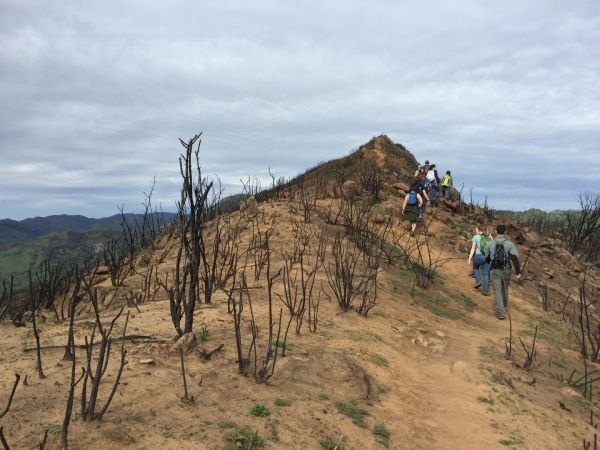When hikers returned to UC Davis Stebbins Cold Canyon Reserve in 2016, a year after a wildfire swept through its expanse of oak trees and chaparral in Northern California, half of them expected to see a devastated landscape. But pre- and post-hike surveys conducted by the University of California, Davis, reveal that roughly a third returned energized, awed and excited about the changes they saw.
Among the survey responses: “This area is restoring itself.” “Awe-inspiring.” “Nature is always changing, sometimes sad. Today I felt hopeful.”
Results of the survey, published in the International Journal of Wildland Fire, indicate that people understand and appreciate the role of fire in natural landscapes more than is perceived.
“People can have really largely positive experiences hiking in a place that has burned,” said lead author Alexandra Weill, who conducted the survey while a graduate student researcher in Professor Andrew Latimer’s lab in the UC Davis Department of Plant Sciences. “They engage in it and find it very interesting and surprisingly beautiful. That can be used as a tool in education and outreach as places around us recover from wildfire.”
Read more at University of California - Davis
Image: Students in a UC Davis fire ecology class walk along a burned ridge top of Stebbins Cold Canyon Natural Reserve in 2016. (Credit: Alexandra Weill, UC Davis)


